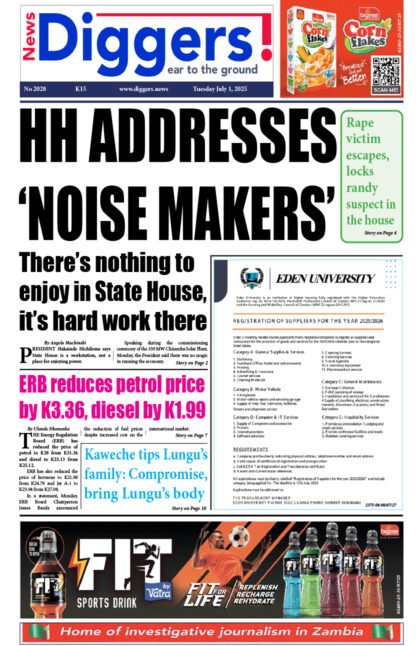THE Water Resources Management Authority has warned of severe river floods in 3 districts of Western Province to be experienced between 1st to 25th February, 2022.
The affected districts include Sioma, Nalolo and Namwala.
In a statement, WARMA public relations officer Mubwina Nalwendo said the peak would be reached about February 4.
“Section 8 (2) (i) of the Water Resources Management Act No. 21 of 2011 mandates WARMA to conduct drought and flood forecasts in collaboration with stakeholders. WARMA is since bringing to the attention of the public that certain parts of the country are likely to experience high river floods of over 80% probability of varying magnitude. Our surface water monitoring stations currently have picked up three triggered rivers namely Kafue flats along Kafue River in Namwala District, Matebele plain near Zambezi River in Sioma and Shang’ombo Districts, and Southern Lueti River in Nalolo District,” Nalwendo stated.
“Details are that Kafue flats in Namwala Districts is expected to flood on the 3rd February 2022, and that water levels will remain high up to 25th February 2022. Our monitoring system here indicates a 100% occurrence probability. Matebele plains in the Sioma District of the Western province are expected to experience floods from 1st February 2022 for a few days. These floods are expected to be severe but will quickly reside in the coming days. We, therefore, would like to advise residents to relocate to safer grounds. Southern Lueti River in Nalolo District is expected to experience floods that equally indicate a 100% occurrence probability. The peak will be reached around 4th February 2022. The floods are expected to be severe and will start residing after 14th February 2022,”
WARMA advised the residents to put measures in place to avoid being caught up in these severe floods.
“We want to alert members of the public, especially residents of these places to put measures in place to avoid being caught up in these severe floods. We equally want to call upon relevant authorities in the public health and sanitation sector, to begin sensitizing the public on health and safety practices in view of possible public health hazards, and water contamination that might come with these floods,” stated Nalwendo.



















